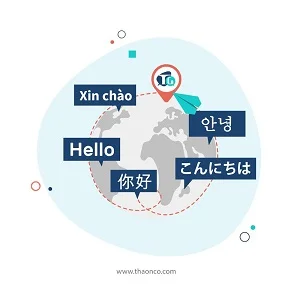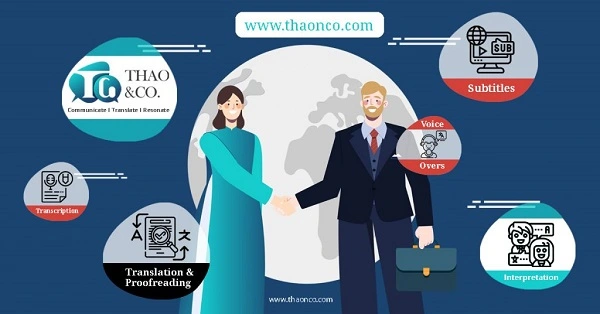Should subtitles be translated by humans or machines? With the development of technology, entertainment companies have diverse options for subtitle translation, but human translation is still the top priority.
Read on to find out the pros and cons of machine vs. human subtitle translation.
Subtitle translation is translating videos from one language into another in the form of text – subtitles. The subtitles are synchronized with the video to help the target audience understand what the video content wants to convey, even without using audio.
Subtitle translation is typically done by human translators or automated systems.
Human subtitle translation is the translation of content done entirely by humans. In contrast, machine-translated subtitles use automatic technologies to perform the task.
Each method has different advantages and disadvantages. The upcoming section will elaborate on the differences between these two subtitle translation methods.
Learn more: Video Subtitle Translation: Breaking the Language Barrier for a Global Audience
What are the differences between machine-translated and human-translated subtitles? We will examine the distinctions in detail below.
Machine translation uses modern technologies to automate the translation process, making it a lot faster than human subtitle translation. Machine translation typically employs non-contextual linguistic rendering algorithms, saving time and implementation costs.
With the development of technology, machine-translated subtitles are becoming more and more accurate in terms of the general language use. However, more often than not, machines fail to convey certain technical terminology or unique words in specific contexts, resulting in mistranslation.
On the other hand, the accuracy of human subtitle translation is controlled and ensured at the highest level. Additionally, the skills and expertise of human translators are essential in producing high-quality and accurate translations.
Machines often struggle to understand the cultural aspects of human language. As a result, machine-translated subtitles will likely fail to localize the video content properly. This can be disturbing and negatively impact the viewing experience.
On the contrary, professional translators are thoroughly familiar with the cultural elements of the target audience and cleverly weave them into the translation. As a result, the translation is well-localized, creating a sense of intimacy with the target audience. Consequently, the video content is also conveyed more effectively.
You may interested: 5 Benefits of Localization when Venturing into Foreign Markets

Flexibility in subtitle translation refers to the clever and context-appropriate use of language, especially for videos with slang, idioms, and metaphors. This is difficult for machine translation since the translation process is pre-programmed and can only literally translate words.
In contrast, human translators can be flexible in choosing suitable words for specific contexts. Also, in cases where language pairs have different text lengths, translators can flexibly adapt the translation to ensure subtitles accurately represent the original, have an appropriate reading speed, and still maintain aesthetics.
Machine translation relies on limited pre-programmed data sources, so creativity in language use is more limited compared to human subtitle translation.
Subtitle translation requires more than just converting words to equivalents – sentences must flow naturally, be easy to understand, and be viewer-friendly. In the process, humans can get creative with language while still accurately conveying the original video content. This helps audiences get both a good understanding of the video content and an enjoyable viewing experience.
Video subtitles not only contain information but also incorporate authentic, diverse emotions. Machine translation cannot fully convey the emotional aspects of human language. In contrast, human-translated subtitles can excellently express this element.
A video with subtitles that are translated to be natural, clearly conveying the nuances and emotions nested in the content, will resonate more deeply with audiences and leave a stronger impression compared to subtitles that are dry and formulaic.
It’s clear that human-translated subtitles help businesses realize many important goals. For example, translating advertising videos allows target audiences to thoroughly understand featured product information and benefits. Professional translators can make content more appealing and engaging, conquering global viewers.
Machines often struggle to understand and convey cultural elements or emotional values hidden in dialogue. Human subtitle translation allows the subtitles to be professionally and artfully translated, ensuring that content resonates and connects with global audiences.

If you are looking for human subtitle translation services, Thao & Co. can be your trusted partner. At Thao & Co., all subtitle translation projects are handled by our team of highly skilled native linguists with extensive experience. You can be fully confident in the quality of services our company provides.
You can easily track your project progress during the collaboration and directly communicate with our linguists via our proprietary platform. This ensures the confidentiality of your project while facilitating a streamlined workflow.
That brings us to the end of our discussion on the merits and drawbacks of machine vs. human subtitle translation. With a good understanding of how these two methods work as well as their pros and cons, you will be able to select the best option for your subtitle translation project.
If you have any other questions about subtitle translation, please contact us via our Get a Quote page for prompt support.